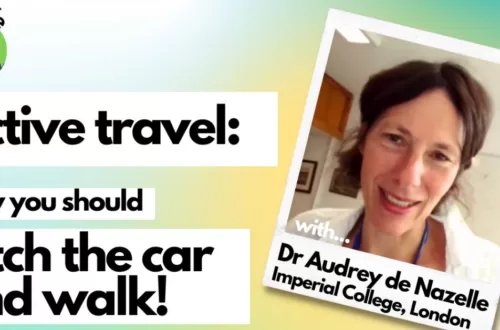
Video: Looking after runners’ feet – with Abid Hussain
Let’s face it, runners’ feet are minging. They take a battering and, as a result, can boast an array of injuries and ailments, from black toenails and bunions, to plantar fasciitis and broken toes.
No one has ever remarked on the beauty of pavement pounders’ lower extremities, and certainly not mine. Indeed, my plates of odd looking meat are hidden away from public view for most of the year, only occasionally emerging to look like an accident in a pair of flip flops.
Looking after runners’ feet is something most of us ignore. So, to find out more about what we should all be doing – especially those of us in our forties, who are losing toenails like loose change – I spoke to Consultant Podiatrist, Abid Hussain.
A man who knows a thing or two about feet, Abid was the lead podiatrist at the 2022 Commonwealth Games. Regularly treating amateur runners, as well as those with professional and Olympic ambitions, he runs UK Sports Podiatry and is the founder of the Dr Foot Podiatry Clinic.
Five common foot issues for runners
1. Blisters. These are the bane of every runner’s existence. They form when friction causes the skin to rub against your shoes or socks, creating fluid-filled sacs that can be painful and annoying. To prevent blisters, make sure you wear well-fitting shoes that are appropriate for your foot type and running style. You can also apply lubricant or tape to areas that are prone to blistering, such as the heels, toes, or arches. If you do get a blister, check out Abid’s video for advice on whether you should pop it or not!
2. Black toenails. These are caused by repeated trauma to the nail bed, usually from your toes hitting the front of your shoes. This can happen if your shoes are too small, too tight, or have a narrow toe box. It can also happen if you run downhill a lot or have long toenails. Check out the video for Abid’s tips on how to cut your toenails. If you do get a black toenail, don’t worry too much. It’s usually not a serious problem and will grow out eventually.
3. Athlete’s foot. This is a fungal infection that causes itching, burning, cracking, and peeling of the skin between the toes or on the sole of the foot. It’s more common in warm and humid environments, where fungi thrive. To prevent athlete’s foot, keep your feet dry and clean, and change your socks often. You can also use antifungal powder or spray on your feet and shoes. If you do get athlete’s foot, treat it with over-the-counter antifungal cream or lotion as soon as possible. If it doesn’t improve in two weeks, see a doctor.
4. Plantar fasciitis. This is an inflammation of the plantar fascia, a thick band of tissue that connects the heel to the toes and supports the arch of the foot. It’s usually caused by overuse, improper footwear, tight calf muscles, or high arches. It can cause sharp pain in the heel or arch of the foot, especially in the morning or after prolonged sitting or standing. To prevent plantar fasciitis, stretch your calves and feet regularly, wear supportive shoes with good cushioning and arch support, and avoid running on hard surfaces. If you do get plantar fasciitis, rest your foot as much as possible, ice it for 15 minutes several times a day, and take anti-inflammatory medication if needed.
5. Bunions. These are bony bumps that form at the base of the big toe joint, causing it to stick out and become swollen and tender. They’re usually caused by genetics, arthritis, or wearing shoes that are too narrow or pointed. They can make running uncomfortable and affect your gait and balance. To prevent bunions, choose shoes that have a wide toe box and don’t squeeze your toes together. You can also use bunion pads or splints to protect and align your toe joint. If you do get bunions, see a podiatrist for advice on how to treat them.
How to find a good podiatrist
Unfortunately, we don’t all have an Abid we can call upon whenever we injure ourselves or need some advice on what to do with our dodgy toenails. However, finding a decent podiatrist is thankfully quite straightforward. Here are a few tips:
- Check credentials: Look for a podiatrist who is registered with the Health and Care Professions Council (HCPC). This ensures that they meet the standards of education, training, and professional conduct required, and aren’t going to subject your feet to some kind of witchcraft.
- Ask for recommendations: Ask your GP, friends, running club or family members if they know of a good podiatrist. Personal recommendations are often the best way to find a safe pair of hands into which to put your feet.
- Look for reviews: Check online reviews from previous patients to see what their experiences were like. This can give you an idea of the podiatrist’s bedside manner, skill level, and overall quality of care. Avoid the one star charlatans promising a quick fix.
- Consider location and availability: An obvious one, but choose a podiatrist who is conveniently located for you and has flexible availability. The last thing any of us wants is to be traipsing miles across town, so even if it means paying a little more, go for the convenience.
- Inquire about specialisations: Some podiatrists may specialise in certain areas, such as sports injuries or running in particular. Similarly, if you have a specific condition, look for a podiatrist who has experience treating it.
- Be thankful: There are some amazing podiatrists out there who, for some reason known only to them, are more than happy to get hands on with your minging feet. Be grateful when you find the one.
Read next: Why running in the rain boosts mental health




